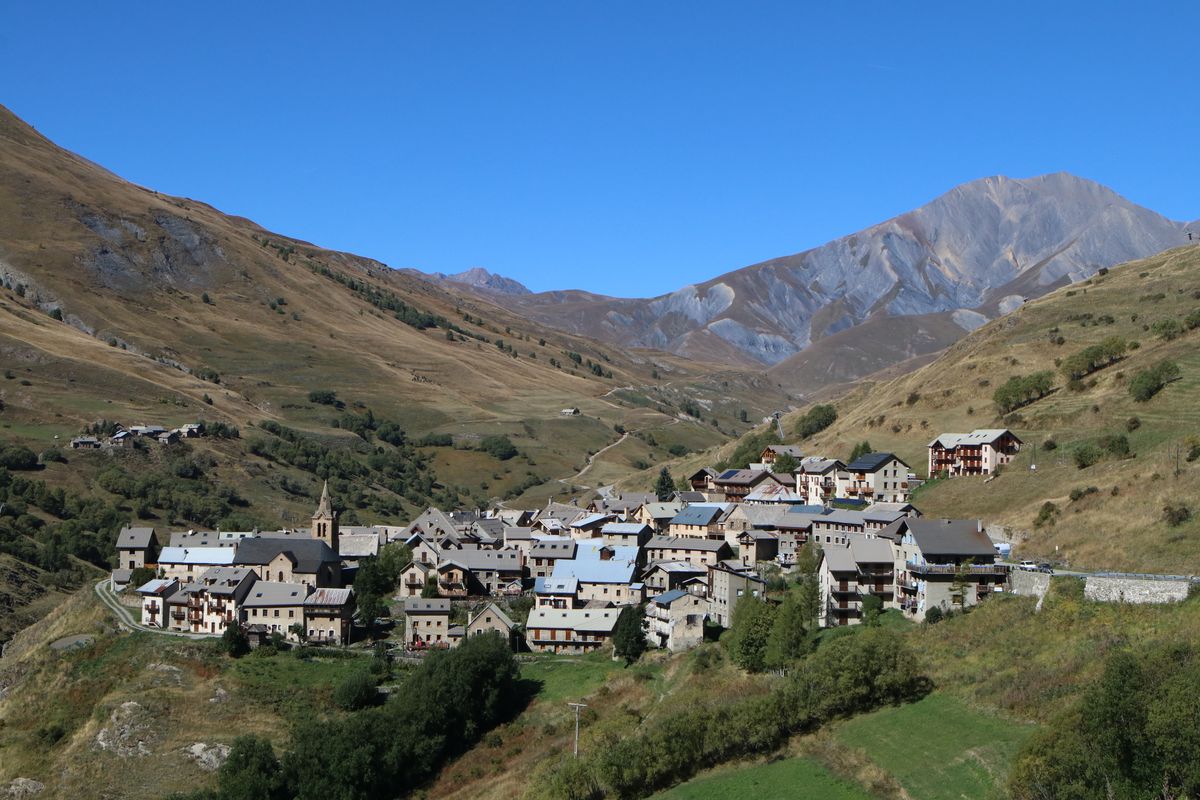
1. From La Grave to the Pic du Mas de la Grave refuge
Passing through the Buffe valley, overlooked by the Pic du Mas de la Grave, you are surrounded by a pastoral landscape, and in the alpine meadows you are quite likely to come across flocks of sheep guarded by the famous Patou, the Great Pyrenean Mountain dog.
Description
- Leave the path and follow the footpath on the left until you reach the hamlet of Les Terrasses. Go through the hamlet staying on the GR, pass the oratory of Le Chazelet (orientation table) and follow the narrow road through the hamlet of Le Chazelet. In Le Chazelet, stay on the main road heading towards the bottom of the cable cars.
- On leaving the village, turn right onto the road leading to the parking lot, and go straight down.
- At the fork, stay on the hillside - don't head downhill towards the mountain stream - leaving the GR. Carry on along the wide track.
- At the next intersection, turn right towards the three hamlets of Les Rivets. Go straight through the hamlets until you reach the tufa cross (1,901m).
- At the cross, head right uphill towards the Les Orliers high pasture chalet. Continue along the good track, cross the mountain stream La Chabanerie, and on to the chalet of the same name. Stay on the hillside and you then reach the ruins standing on the banks of the mountain stream La Courbeille. Cross the stream and carry on until you reach the Pic du Mas de la Grave refuge.
- Towns crossed : La Grave
8 points of interest
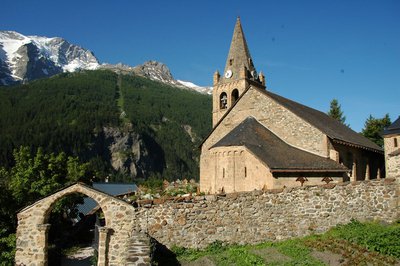
Eglise ND de l'Assomption à la Grave - Jenny Selberg - OT Hautes Vallées  Architecture
ArchitectureNotre-Dame de l’Assomption Church
Listed as an historic monument, Notre Dame de l'Assomption church towers over La Grave. In First Romanesque style, this remarkable building is thought to date from the 11th century, making it the oldest building in the town. All around the church is a cemetery with graves marked by wooden crosses and decorated with brass hearts, facing the giants of ice.
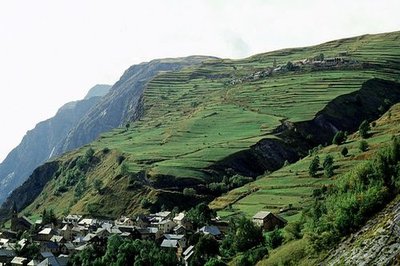
Terrasses, au hameau des Terrasses - Jean-Pierre Nicollet - PNE  Vernacular heritage
Vernacular heritageLa Grave terraces
On the south-facing slope of La Grave, terraced farmland and villages are inseparable. This is a European-wide landscape uniting many architectural, archaeological and natural elements. This mountain farming system was shaped mainly by past and present agricultural activity. The steep terrain at the time required terracing for it to be farmed. These former planted terraces are today natural meadowland, which is mowed or used for grazing. It is highly sensitive to this new pastoral usage, and is little by little showing signs of soil erosion.
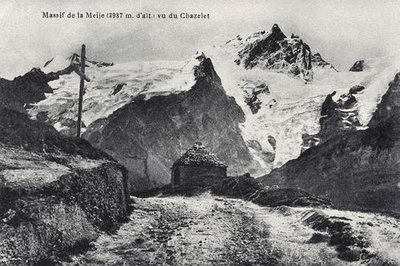
Massif de la Meije vu du Chazelet - PNE  Architecture
ArchitectureSainte-Anne du Chazelet oratory
Although it stands beside an ordinary road, the Chazelet oratory is famous for one of the most beautiful panoramas of the Alps and the Meije mountains. Built in dry stone, the edifice is at 1 834 m and overlooks the valley and the Ecrins and Meije mountains. It has been sketched, photographed and painted many times, including in the famous Meije by the Japanese painter Foujita.
Recently a new orientation table was placed a few metres above the oratory. In two parts, it shows the northern slope of the Meije and the southern slope in the direction of Chazelet and Savoie.
 Panorama
PanoramaChazelet perch
To test your head for heights, there is nothing like this new, life-size game played facing the Meije a steel walkway suspended over empty space. The first few steps are daunting, but reaching the end of the walkway – or rather, empty space – calls for even more courage! Beneath your feet, all the way down below is the village of Les Fréaux, nestling against the Romanche, and above you, the giants of ice. If you add in the element of air, with gusts of wind blowing all around you, then strong sensations are guaranteed!
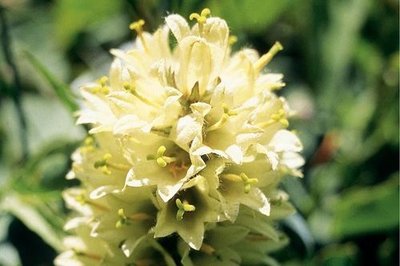
Campanule en thyrse - Bernard Nicollet - PNE  Flora
FloraCampanula thyrsoide
This flower is an emblem of the area of La Grave and is recognisable among all others thanks to its yellow flowers that form a compact flower head also known as "thyrse". It is edible in a cheese-topped bake and is one of the rare biennial alpine plants. The seeds are scattered in the autumn and in the first year grow into big long leaves that form a rosette. Blossoming only occurs in the second year, when after ensuring reproduction, the plant dies.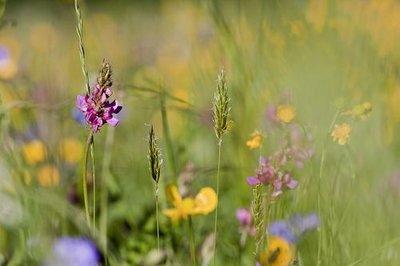
Prairie de fauche - Marc Corail - PNE  Flora
FloraAltitude hayfields
Natural hayfields are of great biological variety and are home to associations of plants that blossom freely. From this botanical variety come a multitude of insects and more particularly butterflies that find an ideal environment for their development. Maintaining the balance of these zones is essential, even more so at this altitude and in such a valley.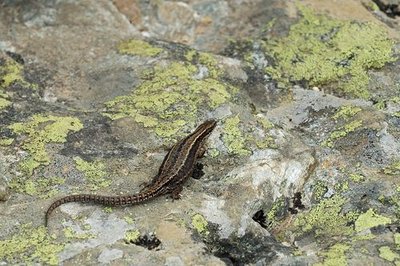
Lézard vivipare - Mireille Coulon - PNE  Fauna
FaunaViviparous lizard
The viviparous or common lizard is present in the north of the park where it lives in cool, damp zones (moors, alpine and subalpine meadows, or at the edge of streams). It has this name as the females, in certain populations, keep the eggs in their abdomen until they hatch. Affected by any development that leads to the destruction of wet zones, it is a protected species all over France and considered vulnerable on a regional level.
 Fauna
FaunaCommon quail
Generally present in fields of cereal crops, the common quail also occupies the mountain meadows up to 2000 m or more. In the long grass, it pecks at insects and later on at the seeds as they reach maturity. A very discreet bird, it nests in the ground in a little dip, where it can lay twice to replace eggs in the case of destruction. Its song, that can be heard night and day, often gives it away: "pay your debts" is the male's song to keep its rivals at bay.
Altimetric profile
Information desks
Tourist information office of La Grave
RD1091, 05320 La Grave
Opening hours:
- May to mid-June: from Tuesday to Saturday from 9 am to noon and from 2 pm to 5 pm.
- Mid-June to mid-July and mid-August to mid-September: Monday to Saturday from 9 am to noon and from 2 pm to 5.30 pm.
- Mid-July to mid-August: every day from 9 am to noon and from 2 pm to 5.30 pm.
Maison du Parc du Briançonnais
Place Médecin-Général Blanchard, 05100 Briançon
Located at the foot of the medieval town fortified by Vauban, declared World Heritage by UNESCO in 2008, the Maison du Parc Briançon is a welcoming place of information exchange. Three floors of exhibition to discover : the natural and cultural heritage, the museum of the history of skiing in Briançon. Documentation, maps, guidebooks, books and products of the Park. Guided tours for groups by reservation. Free admission.
Source

Report a problem or an error
If you have found an error on this page or if you have noticed any problems during your hike, please report them to us here:


